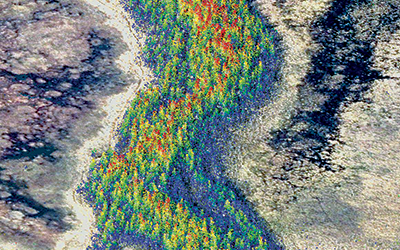Wetland Classification for a Boreal Wetland Complex
Client
Not disclosed
Location
Northern Alberta
Project Duration
June 2018 – December 2018
Background
Many natural resources development companies require wetland and upland land cover classification information to characterize baseline conditions as the basis for long-term monitoring for potential impacts to the wetlands and surrounding watershed land cover during the development, operation, and closure of projects.
Services Provided
Hatfield developed a wetland and upland vegetation classification approach using multiple remote sensing datasets and advanced machine learning analysis and object-based integration methods. The objective of this project was to produce a comprehensive land cover classification following the Alberta Wetland Classification System (AWCS). The approach included object-based image analysis and machine learning methods, which enabled the integration of high-resolution Worldview-3 imagery, Sentinel-2, and full point cloud LiDAR. To address the requirements of the AWCS to identify coniferous, deciduous and mixed-species composition forest stands, we used the Lidar point cloud data to delineate individual tree crowns, which were then categorized as either coniferous or deciduous using the high-resolution multi-spectral satellite data. The final classification dataset was presented at the stand level and was consistent with the AWCS, and included class (bog, fen, swamp, marsh, and open water) and form (graminoid, shrub, treed). A full accuracy assessment and uncertainty analysis was completed to provide quality assurance to the final products.
